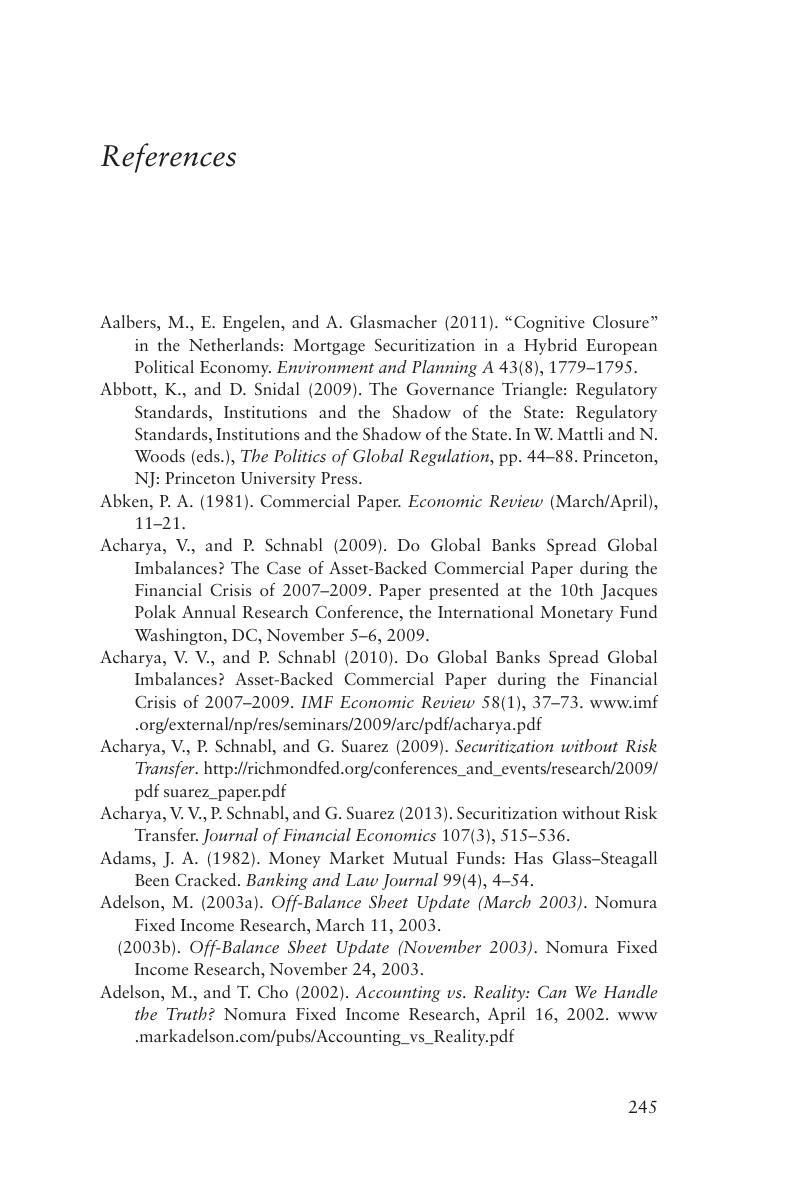Book contents
- The Growth of Shadow Banking
- The Growth of Shadow Banking
- Copyright page
- Dedication
- Contents
- Preface
- 1 States and the Regulation of a Globalized Finance
- 2 The ABCP Market at the Heart of Shadow Banking and the Financial Crisis
- 3 How to Explain the Absence of Regulatory Action on Shadow Banking: Situating Regulators in Their Socioeconomic Context
- 4 The Transformation of US Financial Markets since the 1960s and the Emergence and Growth of the ABCP Market
- 5 In the Shadow of Basel
- 6 Converging Procedures or Standards?: The Challenge of the IASC and Domestic Pathways to SIC 12
- 7 Steering Finance toward Prudence: The Role of Banking Regulators in the Governance of Compliance Decisions
- 8 The Fate of the Bank-Based Shadow Banking System Postcrisis
- 9 Conclusion: Changing the Façade, but Not the Structure: The Continuing Threat of Shadow Banking
- Appendix A : Interview Data
- Appendix B
- References
- Index
- References
References
Published online by Cambridge University Press: 26 July 2018
- The Growth of Shadow Banking
- The Growth of Shadow Banking
- Copyright page
- Dedication
- Contents
- Preface
- 1 States and the Regulation of a Globalized Finance
- 2 The ABCP Market at the Heart of Shadow Banking and the Financial Crisis
- 3 How to Explain the Absence of Regulatory Action on Shadow Banking: Situating Regulators in Their Socioeconomic Context
- 4 The Transformation of US Financial Markets since the 1960s and the Emergence and Growth of the ABCP Market
- 5 In the Shadow of Basel
- 6 Converging Procedures or Standards?: The Challenge of the IASC and Domestic Pathways to SIC 12
- 7 Steering Finance toward Prudence: The Role of Banking Regulators in the Governance of Compliance Decisions
- 8 The Fate of the Bank-Based Shadow Banking System Postcrisis
- 9 Conclusion: Changing the Façade, but Not the Structure: The Continuing Threat of Shadow Banking
- Appendix A : Interview Data
- Appendix B
- References
- Index
- References
Summary

- Type
- Chapter
- Information
- The Growth of Shadow BankingA Comparative Institutional Analysis, pp. 245 - 284Publisher: Cambridge University PressPrint publication year: 2018



